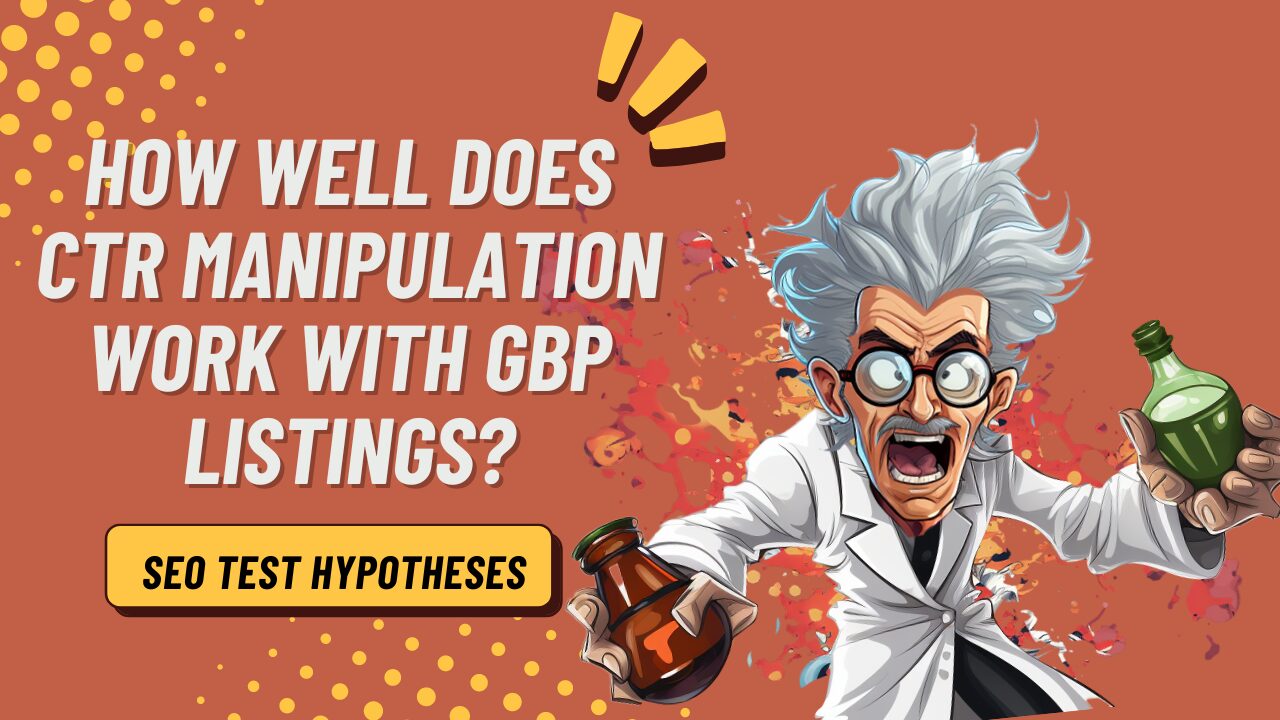Discover the Power of CTR Manipulation Press Release for Optimum Exposure
Discover the Power of CTR Manipulation Press Release for Optimum Exposure
Blog Article
Optimizing Organic Click-Through Fees With CTR Manipulation
The optimization of natural click-through rates (CTR) is a nuanced undertaking that rests on understanding both customer psychology and efficient web content presentation. By leveraging critical manipulation strategies, such as incredibly crafted headlines and aesthetically appealing elements, online marketers can significantly improve customer involvement. However, the landscape is rife with false impressions and oversimplifications regarding what really drives CTR. As we discover the complexities of these strategies, it becomes vital to determine the underlying principles that can cause continual success in catching target market focus. What genuinely distinguishes the reliable from the inadequate in this important facet of digital marketing?
Recognizing Click-Through Rates
Understanding click-through prices (CTR) is necessary for examining the performance of internet marketing strategies. CTR determines the percentage of customers who click on a certain web link or ad compared to the total variety of individuals who see it. A greater CTR suggests that the web content is involving and appropriate to the target market, while a lower CTR might signify a requirement for optimization.
To determine CTR, separate the variety of clicks by the number of impacts and increase by 100. For example, if an advertisement obtains 300 clicks out of 10,000 impacts, the CTR would certainly be 3%. This statistics is vital for examining various components of electronic advertising, including seo (SEARCH ENGINE OPTIMIZATION), e-mail projects, and social networks advertising.
Additionally, examining CTR helps marketers recognize which techniques yield the very best outcomes and which call for refinement. By concentrating on boosting CTR, companies can improve their material's exposure and efficiency, leading to increased traffic and possible conversions. Understanding the subtleties of CTR is foundational for any marketing expert aiming to optimize their online existence and take full advantage of roi (ROI)

The Psychology of Customer Behavior
Customer actions is substantially influenced by emotional factors that determine exactly how people interact with on the internet content. Comprehending these elements is vital for maximizing click-through rates (CTR) in organic search outcomes.
Emotional responses also dramatically influence user habits. Content that resonates psychologically can cause a feeling of necessity or curiosity, motivating individuals to click. Additionally, social evidence-- such as user evaluations or scores-- can enhance trust and urge engagement, as people usually seek to the behaviors of others to inform their own decisions.
Moreover, the principle of shortage can drive clicks - GMB CTR Manipulation. Limited-time deals or special material produce a concern of losing out (FOMO), engaging customers to act promptly. Understanding these mental vehicle drivers allows marketing experts to produce even more compelling material that resonates with their target audience
Reliable CTR Adjustment Strategies
Leveraging emotional insights can considerably boost click-through rates (CTR) through targeted adjustment strategies. One of one of the most reliable approaches is making use of engaging headlines that stimulate interest or necessity. Phrasing titles as questions or incorporating numbers can draw in more attention, triggering individuals to click.
One more method includes optimizing meta summaries to develop a feeling of relevance and immediacy. By plainly laying out the services or benefits offered in the content, you can engage prospective viewers and encourage them to click. In addition, using power words-- such as "unique," "proven," or "totally free"-- can improve the charm of your content.
Visual components also play a crucial function. Integrating eye-catching photos or thumbnails can draw customers in and improve CTR. A/B screening different visuals can help determine which photos reverberate ideal with your audience.
Lastly, ensuring that your content guarantees deliverable worth leads to greater CTR. When individuals regard that clicking will offer them with meaningful understandings or options, they are more probable to involve. By utilizing these methods attentively, marketing professionals can effectively manipulate CTR to their news benefit while keeping ethical standards.
Typical Misconceptions About CTR
A number of misconceptions border click-through rates (CTR) that can lead marketers to make misguided choices. While a high CTR recommends that more customers are clicking, it does not ensure sales or conversions.
An additional common belief is that CTR is a separated metric. In reality, CTR must be reviewed together with other efficiency signs, such as bounce rate and conversion rate, to acquire a holistic view of campaign success.
Furthermore, some marketers think that optimizing for CTR alone suffices. However, focusing specifically on CTR can bring about clickbait techniques that may bring in clicks however fall short to engage customers meaningfully. This method can damage brand name reputation and lead to reduced retention rates
Last but not least, there is a concept that CTR strategies are universally efficient. The reality is that ideal CTR strategies can vary substantially across sectors and target market, demanding tailored approaches for various market sections. Understanding these misconceptions is vital for developing reliable CTR methods that straighten with overarching advertising and marketing objectives.
Determining CTR Success
Although high click-through rates (CTR) can show effective engagement with web content, determining their real success calls for an extensive evaluation of a number of variables. Initially, it is vital to understand the context in which the CTR is achieved. For example, Our site a high CTR on a misleading title may not convert to significant interaction or conversions, ultimately reflecting inadequately on the brand name's trustworthiness.
2nd, examining the resource of traffic is critical. Organic web traffic from online search engine can signify a robust material technique, while clicks from unnecessary resources might suggest a lack of targeting. In addition, determining the succeeding individual actions is important; evaluating metrics such as bounce rate, time invested in page, and conversion rates can supply deeper insights right into the quality of the involvement launched by the CTR.

Final Thought

The optimization of organic click-through prices (CTR) is a nuanced undertaking that hinges on understanding both user psychology and reliable web content presentation. CTR determines the percent of users that click on a details link or ad contrasted to the complete number of customers who watch it. A higher CTR suggests that the material is engaging and appropriate to the target audience, while a reduced CTR may signal a demand for optimization.
Focusing solely on CTR can lead to clickbait techniques that might draw in clicks however fail to engage users meaningfully. Additionally, measuring the subsequent customer actions is crucial; evaluating metrics such as bounce rate, time spent on page, and conversion prices my company can provide deeper insights into the top quality of the involvement launched by the CTR.
Report this page